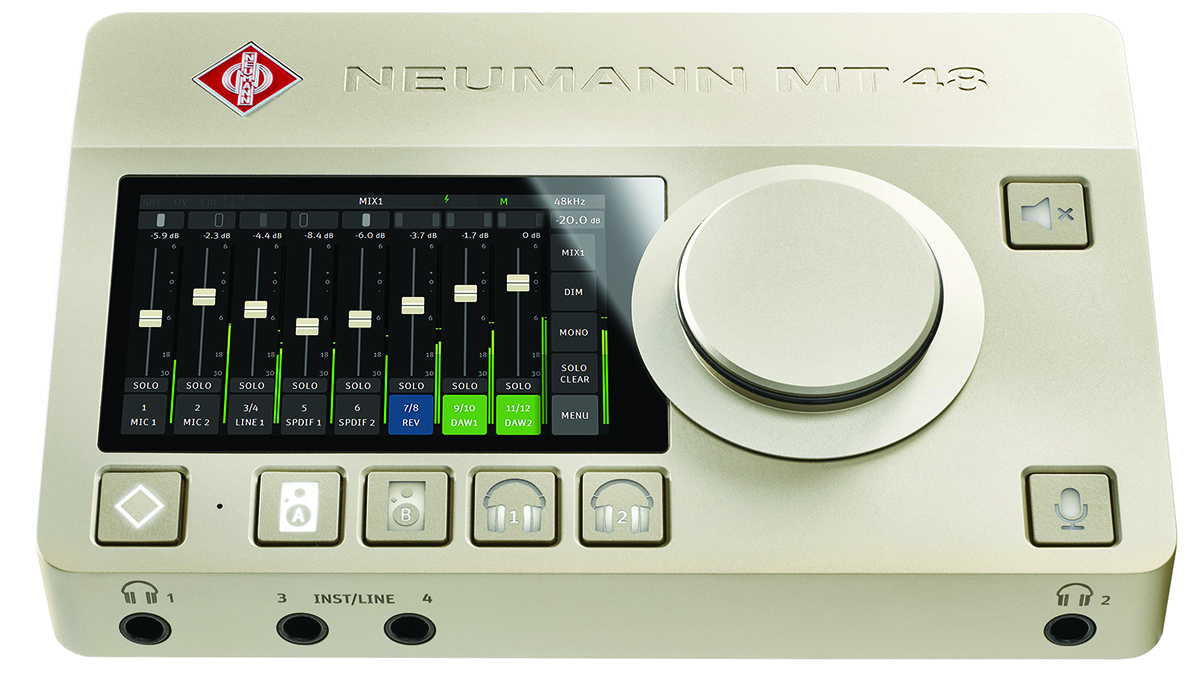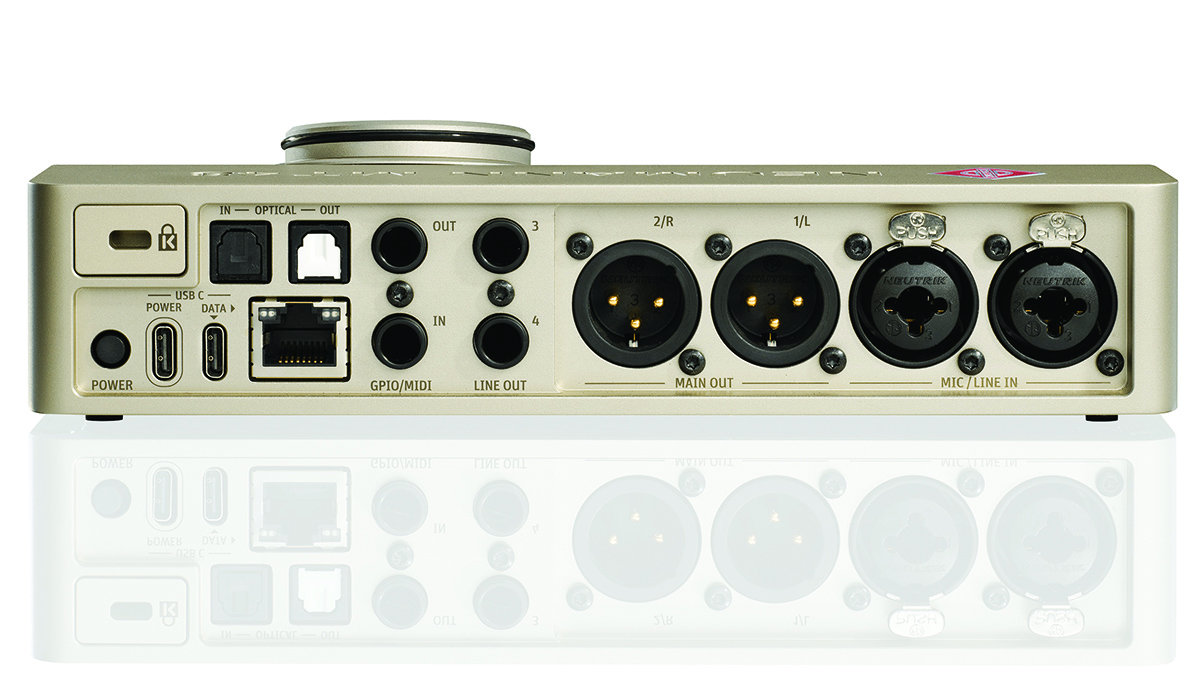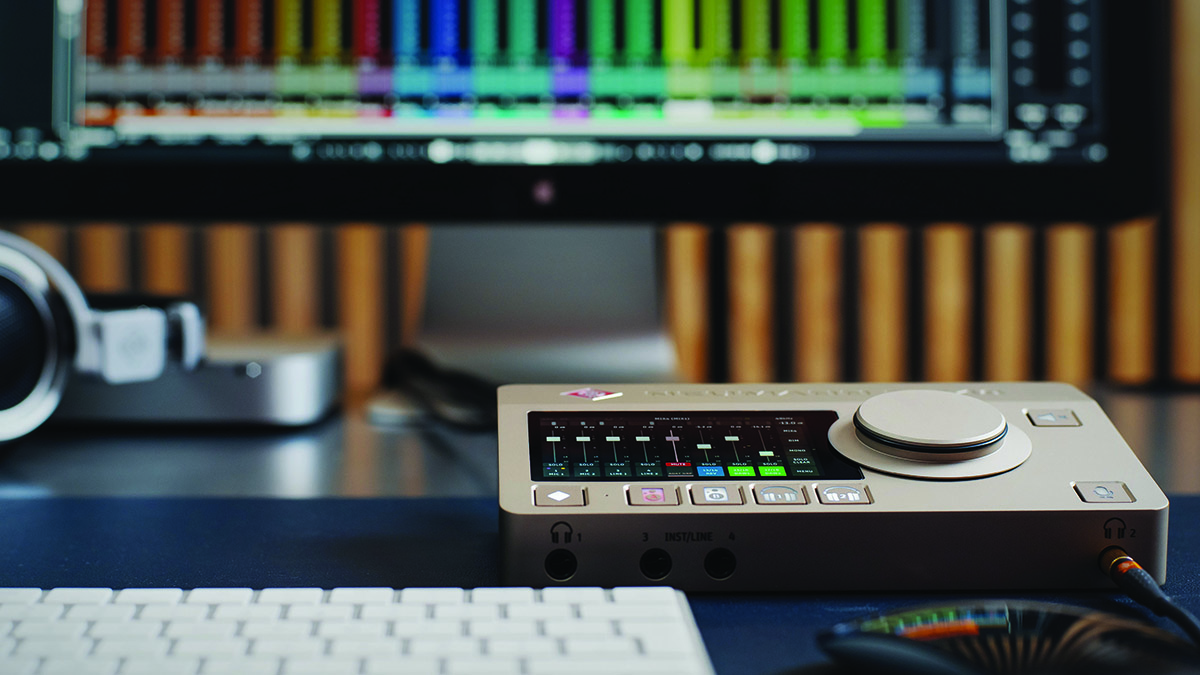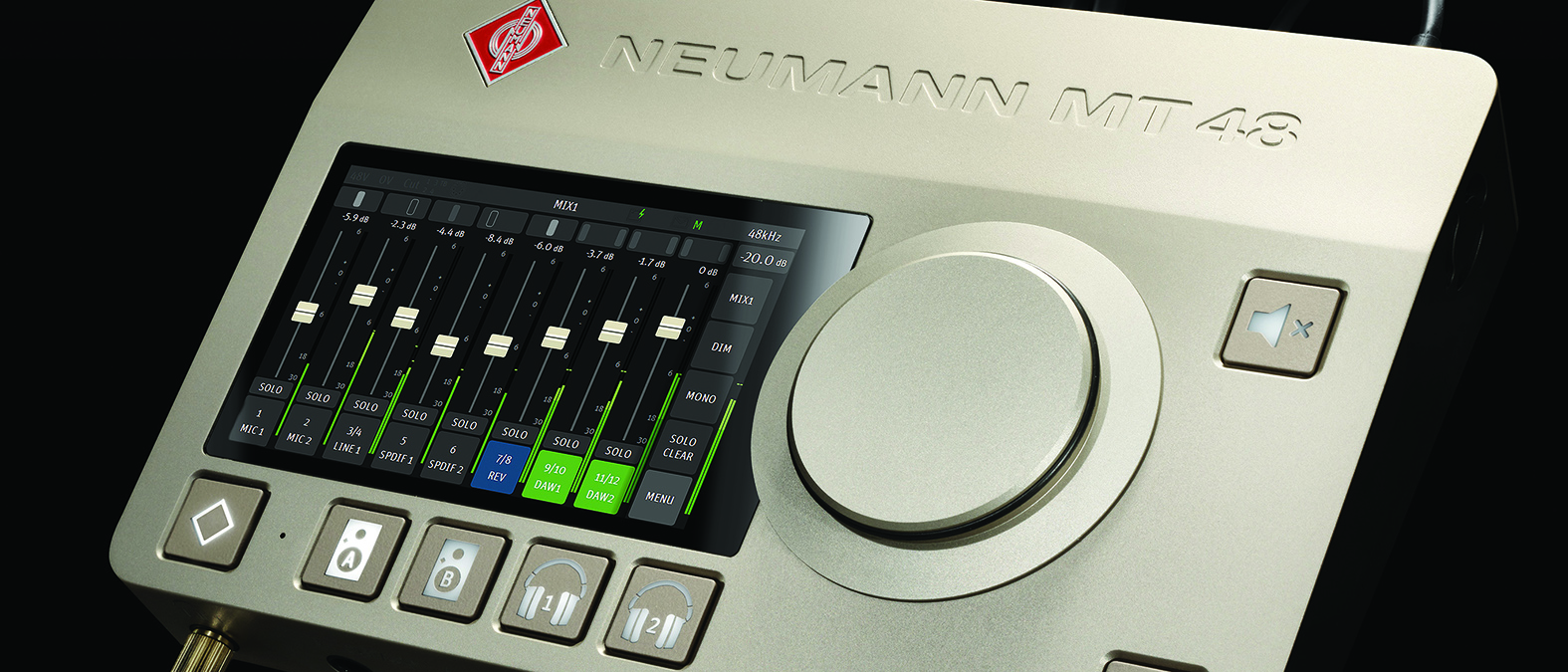MusicRadar Verdict
If you’ve got expensive microphones and monitors, MT 48 is one – albeit expensive – missing link that will let you hear them in all their glory.
Pros
- +
Sounds amazing.
- +
The touchscreen is easy and superb.
- +
The mixing features are potentially huge.
- +
So much more than it looks!
Cons
- -
Expensive.
- -
Not USB powered (and gets hot).
MusicRadar's got your back
Neumann MT 48: What is it?
Neumann doesn’t do things by halves. Its microphones are studio standards, with the U87 in particular being a legendary vocal and instrument recorder that has been used on countless recordings. Then there are the company’s studio monitors. The KH range basically provides the same kind of audio quality at the other end of the recording chain – you’re hearing your mixes as well as they were recorded with those mics. But there’s something in the middle linking the mics and monitors that Neumann hadn’t done – the audio interface. With the MT 48, the missing link is here. And it could be the best audio interface ever made. But for its asking price, it bloody well should be.
When we heard about the MT48, we knew it would come with a ‘Neumann’ price tag but this is a company that delivers the specs to back up the high asking prices. So what can the MT 48 possibly be offering to demand the better part of two grand?
The big claim made by Neumann is that this is the first interface “to unlock the full potential of Neumann microphones and monitors”. In other words, up until now you weren’t actually hearing how good either end of your signal chain could be because your old interface simply didn’t cut the mustard.

To back this up, MT 48 features a dynamic range of 136dB. As Neumann point out, this is four times the resolution of competing devices. This means the interface will handle a huge audio range when recording, and minimise clipping. Other interfaces typically boast figures between 115 and 125dB.
The MT48’s preamps also have 78dB of gain so will work with ultra sensitive condenser mics and low output ribbons. Neumann has also given as much thought to the headphone and monitor outs; the former have low impedance and high enough power to drive any phones.

Neumann MT 48: Performance and verdict
Aside from the specs, the standout feature on the MT 48 is the touch interface – we really are talking futuristic.

• Solid State Logic SSL 12
You don’t get the fancy screen and mixing but this is a great-sounding interface with flexible connectivity.
• Audient iD44
Again you’re missing out on the touchscreen and mixing features but you get a good range of I/O.
You get to control everything by selecting a Menu page with main options via the touchscreen. These then show various onscreen parameters which can be selected by touch, and you edit these with the dial. Do everything from adding reverb to a headphone mix or changing EQ pointers and values on analogue or digital channels.
It’s a very quick process and simple to step in and out of areas; in fact it’s easier than it should be given that what you get access to is impressively vast.
There is a very slight lag when touching certain options but the large and smooth-feeling rotary allows any fine movements to be made with ease. Using the screen not only quickly becomes second nature but almost feels like an extension of your computer – a replacement even, as you will be using your PC or Mac less because it acts like a mixer too.
The mixing extras
The MT 48 might look like a basic interface but the specs and touch interface have already shown it’s not. The other bonus ‘we didn’t know we wanted until now’ feature is the unit’s ability to work as a standalone mixer without your computer. And with up to four custom mixes possible, and easily selectable, that’s a lot this interface can do away from your DAW.
You can add onboard dynamic processing and reverb to every channel, and the specs of these channels mean you’re effectively talking about potentially big mixes. This is because while you might be starting with the four analogue ins and eights outs (two sets of monitors and two headphones) the MT 48 is expandable by ADAT to add another eight digital input and output channels.
It also has AES67 ethernet expansion which is used in the broadcast industry but could really ramp up that digital channel count. These extra mixing options are more features to help justify that massive price tag.

The future of interfacing?
There’s obviously a heck of a lot to love here. The audio specs are staggeringly impressive, as is the resulting sound quality, and the additional mixing features and DSP are a mind-bogglingly brilliant addition. All of these extend this interface’s capabilities way beyond our normal expectations – it left ‘normal’ behind just with the dynamic range figure alone – almost to the point where we’re now feeling paranoid about our existing interface.
The cost is obviously prohibitive, but, what Neumann has done here is let other interface companies do the hard slog, waited and come in late in the day with a product that shows them all how to do it. It really could be the future of interfacing – the touchscreen and mixing should be something we all aspire to use. Some day, we could all be recording with interfaces like this, but whether that day is today very much depends on your bank balance.
MusicRadar verdict: If you’ve got expensive microphones and monitors, MT 48 is one – albeit expensive – missing link that will let you hear them in all their glory.
Neumann MT 48: The web says
"My recordings, both of miked and DI sources, were amazingly clean and crisp. The headphone amps sound excellent and have plenty of power. The overall sound quality is exceptional."
Mix Online
Neumann MT 48: Hands-on demos
Georg Neumann GmbH
Get.Beautiful.Recordings
Sweetwater
Alec Brits
Neumann MT 48: Specifications
- Dimensions: (W x H x D): 370 x 100 x 170mm.
- Weight: 1.58kg.
- CONTACT: Neumann
Andy has been writing about music production and technology for 30 years having started out on Music Technology magazine back in 1992. He has edited the magazines Future Music, Keyboard Review, MusicTech and Computer Music, which he helped launch back in 1998. He owns way too many synthesizers.
“It’s about delivering the most in-demand mods straight from the factory”: Fender hot-rods itself as the Player II Modified Series rolls out the upgrades – and it got IDLES to demo them
“For some reason, the post office shipped your guitar to Jim Root of Slipknot”: Sweetwater mailed a metal fan's Jackson guitar to a metal legend
"No one phoned me. They never contacted me and I thought, 'Well, I'm not going to bother contacting them either'": Ex-Judas Priest drummer Les Binks has died aged 73











